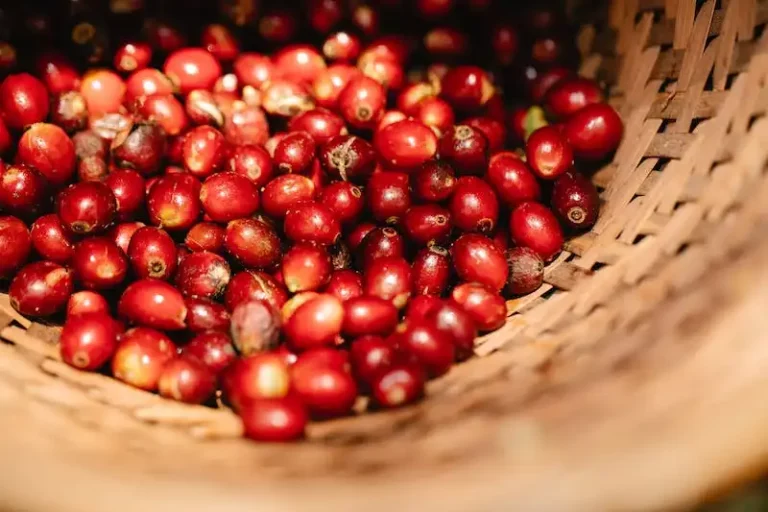Broccoli—Brassica oleracea var. italica—is a popular vegetable among gardeners and home cooks. Broccoli plants are grown for their deep green shoots and tight clusters of flower buds, known as heads. When grown in gardens, broccoli is considered a cool-weather crop, as it thrives in temperatures between 60 and 70 degrees Fahrenheit. The plants prefer full sunlight, but can tolerate some shade. They are also somewhat tolerant of heat, making them a versatile choice for gardeners in different climates.
There are several types of broccoli, each with its own unique characteristics and flavors. The first type commonly grown is known as “heading” broccoli, which produces a single large head on a central stalk. This is the most popular type of broccoli, and it can reach a size of about three to four feet tall when fully grown. Another variety, known as “broccolini,” is a cross between regular broccoli and Chinese kale. It features smaller heads and long, tender stalks. The third type is called “gai lan” or Chinese broccoli, which is a leafy vegetable that is often used in Asian cooking.
When choosing which type of broccoli to grow, it is important to consider the climate and growing conditions in your area. Broccoli plants are typically started from seed indoors about six to eight weeks before the last frost date. They can then be transplanted into the garden once the soil has warmed up and the risk of frost has passed. Broccoli plants should be spaced about 18 to 24 inches apart, allowing enough room for their heads to develop fully.
Broccoli plants grow best in rich, well-drained soil that is high in organic matter. They require regular watering to keep the soil evenly moist. In terms of care, gardeners should remove any weeds or competing plants from the area around the broccoli plants to ensure proper growth. Additionally, it is important to keep an eye out for pests, such as aphids or cabbage worms, and to take appropriate action to prevent damage to the plants.
In conclusion, understanding the different types of broccoli and their growing requirements can help gardeners successfully cultivate this nutritious vegetable in their own gardens. Whether you choose a traditional heading broccoli, a unique broccolini variety, or a flavorful Chinese type, broccoli can be a rewarding crop to grow at home. With the right planting and horticultural practices, you can enjoy a bountiful harvest of fresh, healthy broccoli throughout the growing season.
Growing broccoli in home gardens
Gardeners who are looking to grow broccoli in their home gardens have a variety of options to choose from. Broccoli, which is a member of the Brassica oleracea group, can be easily grown in different types of gardens including both direct and indirect sunlight. It is a popular crop that can be harvested in multiple stages, allowing gardeners to enjoy a continuous supply of fresh broccoli throughout the growing season.
When it comes to growing broccoli, it is important to choose the right variety for your garden. There are different types of broccoli–Brassica oleracea var. botrytis, Brassica oleracea var. italica, and Chinese broccoli–that can be grown in home gardens. Each variety has its own unique characteristics and growing requirements.
Broccoli plants can be grown from seeds or transplants. If starting from seeds, gardeners need to plant them about 1/4 inch deep in moist soil. It is important to keep the soil consistently moist to ensure successful germination. Once the seedlings have emerged, they should be thinned to a distance of about 18 inches apart to allow enough space for the plants to grow and develop.
Broccoli plants require deep, well-drained soil and a good source of nutrients. Gardeners should prepare the soil by adding organic matter, such as compost or well-rotted manure, to improve soil fertility. Additionally, broccoli plants prefer cooler temperatures and can tolerate light frosts, making them suitable for growing in both spring and fall.
When it comes to caring for broccoli plants, they require regular watering to ensure they receive enough moisture. The soil should be kept consistently moist, especially during hot and dry periods. Broccoli plants also benefit from a side dressing of fertilizer about 4-6 weeks after planting. This will provide them with the necessary nutrients for healthy growth and development.
Harvesting broccoli is a two-part process. The first part involves cutting the main head when it reaches its desired size, leaving about 6 inches of the stalk attached. This will allow the plant to produce secondary shoots, which can be harvested later. The secondary shoots, also known as side shoots or broccoli florets, will appear in clusters and can be harvested as they mature.
Broccoli is a versatile vegetable that can be enjoyed cooked or raw. It is a great source of vitamins, minerals, and fiber, making it a healthy addition to any diet.
In conclusion, growing broccoli in home gardens is a rewarding experience for gardeners. By choosing the right variety, providing proper care and attention, and following the recommended cultural practices, gardeners can easily grow this popular vegetable and enjoy a bountiful harvest of fresh, nutritious broccoli.
Types of Broccoli
Broccoli, scientifically known as Brassica oleracea, is a popular vegetable among gardeners due to its versatility and health benefits. There are several different types of broccoli that vary in their description, growth habits, and harvesting time.
One of the most popular varieties is regular broccoli, which is known for its large green flower heads and thick stalks. It is easily grown in gardens and can tolerate a variety of climates. Another popular type is broccolini, a smaller variety with long, thin stalks and smaller flower heads. This variety is also known as “baby broccoli” and is a favorite among chefs for its tender texture and unique flavor.
Broccoli can also be classified into different groups based on how it is grown. There are seed varieties, which are grown from seeds planted directly into the garden. These varieties include broccoli raab, a fast-growing type with edible leaves and shoots. Transplant varieties, on the other hand, are grown from seedlings that are first started indoors and then transplanted into the garden. The most common transplant variety is known as “heading broccoli” and forms a tight, compact head.
In addition to these main types, there are also other specialized varieties of broccoli. For example, Romanesco broccoli is known for its unique appearance with bright green, spiral-shaped heads. It is a cool-season crop that prefers mild temperatures for optimal growth. There is also Chinese broccoli, which has broad, glossy leaves and small flower heads. It is commonly used in Asian cuisine.
When choosing a type of broccoli to grow, gardeners should consider their climate, sunlight, and growing conditions. Some varieties prefer cool temperatures, while others can tolerate heat. It is also important to provide adequate sunlight and water for optimal growth. Broccoli plants should be spaced about 18-24 inches apart to allow enough room for the heads to develop.
Harvesting broccoli is a simple process. The heads are typically ready to be harvested when they are firm and fully formed. To harvest, simply cut the main head off using a sharp knife, leaving about 6 inches of stalk attached. This allows for side shoots to develop, which can be harvested later. It is recommended to harvest broccoli heads in the morning when they are the most crisp and flavorful.
In conclusion, broccoli is a versatile and nutritious vegetable with several different types to choose from. Whether you prefer the classic regular broccoli or the unique Romanesco variety, growing broccoli in your garden can be a rewarding and healthy experience.
Sources:
– UF/IFAS Gardening Solutions: https://gardeningsolutions.ifas.ufl.edu/plants/edibles/vegetables/broccoli.html
Broccoli–Brassica oleracea L Italica group 1
Broccoli–Brassica oleracea L Italica group 1, also known as broccoli, is a vegetable plant that belongs to the Brassica oleracea species. It is one of the most popular vegetables grown in gardens and home gardens. Broccoli plants thrive in full sunlight and are often included in home garden setups.
There are different varieties of broccoli, each with its own description and growing requirements. Broccoli can be grown directly from seed or transplanted as seedlings. It is a cool-season crop that can be planted in early spring or late summer for a fall harvest. The plants can grow to be around 1 to 3 feet tall, with stalks that support larger heads or smaller side shoots.
Broccoli is easily recognized by its thick, green stalks and compact heads. The central head is the first to develop, followed by smaller side shoots that can be harvested as they mature. The stalks and heads of broccoli are deep green in color and offer a tender and nutritious addition to any meal.
Broccoli–Brassica oleracea L Italica group 1 is often grown together with other vegetables due to its ability to attract beneficial insects and repel harmful pests. It is a versatile plant that can be used in a variety of cooking solutions, from steaming to stir-frying. The taste of broccoli is similar to other types of Brassica oleracea vegetables, such as cauliflower and cabbage.
When harvesting broccoli, gardeners would typically cut the head plus three to four inches of stalk. This encourages new growth and ensures a continuous harvest throughout the growing season. It is important to keep in mind that broccoli can become bitter if left on the plant for too long, so regular harvesting is recommended.
Broccoli–Brassica oleracea L Italica group 1 is a nutritious and delicious vegetable that is enjoyed by many. Whether grown in a home garden or purchased from a grocery store, broccoli provides numerous health benefits and is a great addition to any meal plan.
- Footnotes:
- 1. source: ufifas
Description
Broccoli, also known as Brassica oleracea var. italica, is a vegetable that belongs to the cabbage family. It is grown for its edible flower heads, which are green in color. The heads of broccoli are typically large and compact, consisting of tightly clustered flower buds. There are several different types of broccoli, each with its own unique characteristics.
One type of broccoli is broccolini, which is a smaller variety with longer stalks and smaller heads. Broccolini is popular for its tender shoots and mild flavor. Another type is Chinese broccoli, which is also known as Gai Lan. Chinese broccoli has thick stems and large leaves, and it is often used in stir-fry dishes.
Broccoli can be grown from seeds or transplants. When planting broccoli, it is important to choose a sunny spot in the garden with well-drained soil. Broccoli plants prefer cool weather and do not tolerate extreme heat. They also require regular watering to ensure proper growth.
Broccoli plants can be easily damaged by wind, so it is important to provide them with support. This can be done by staking the plants or using a trellis. In addition, gardeners should be vigilant for pests such as aphids, cabbage worms, and flea beetles, which can all damage broccoli plants.
Broccoli is a slow-growing crop that takes approximately 85 to 100 days to mature. The best time to harvest broccoli is when the heads are firm and tight. It is recommended to cut the heads off the plants leaving about 4-6 inches of stalks attached. This will encourage the plants to produce more side shoots, allowing for multiple harvests.
Broccoli is a nutritious vegetable that is high in vitamins A and C, as well as fiber. It can be enjoyed raw or cooked, and is a popular addition to salads, stir-fries, and steamed vegetable dishes.
For more information on types of broccoli and their cultivation, you can visit the website of the University of Florida Institute of Food and Agricultural Sciences (UF/IFAS).

